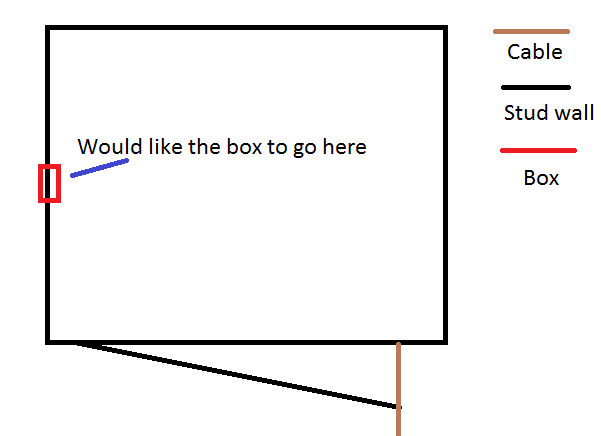If you have access to the top plate of the wall and the wall has no insulation, that's super easy:
- Get a low-voltage, existing work rough-in box from the hardware store.
- Cut a hole in the wall for your box. Make sure you are at least a couple inches away from a stud, although dead center between to adjacent studs makes the process easier.
- Drill a 1/2" hole in the exact middle of the top plate.
- Drop the cable down through the top plate.
- Stick your hand in to the wall through the hole you cut through the drywall and grab cable.
- Done!
If the wall is insulated, the procedure differs based on what kind of insulation you have. If the insulation is soft, such as blown-in cellulose or batting, then instead of just dropping the wire in you need to use something stiff to push through the insulation. The proper tool would be a fish tape or similar, but if the distance isn't too long you could use a hanger or similar.
If the insulation is rigid foam or sprayed in foam then you will need to carve a channel through the insulation. The easiest way to do that is with a long drill bit designed for drilling through cross-members inside a wall. The only difficult part is knowing where the drill bit ends up because they don't always travel straight. I've had success drilling the initial hole through the top plate almost adjacent to a stud, and aiming the long drill bit towards the stud. (Not at the stud; towards and long the stud.) The drill bit can then follow the stud down the wall. That should make it easier to locate the cavity you've drilled out.
And don't forget that repairing drywall is pretty easy in the grand scheme of things. If you need an extra hole(s) then don't worry about it.
When you're all done, make sure to fill the hole you drilled in the top plate with fire stop caulk or foam.

